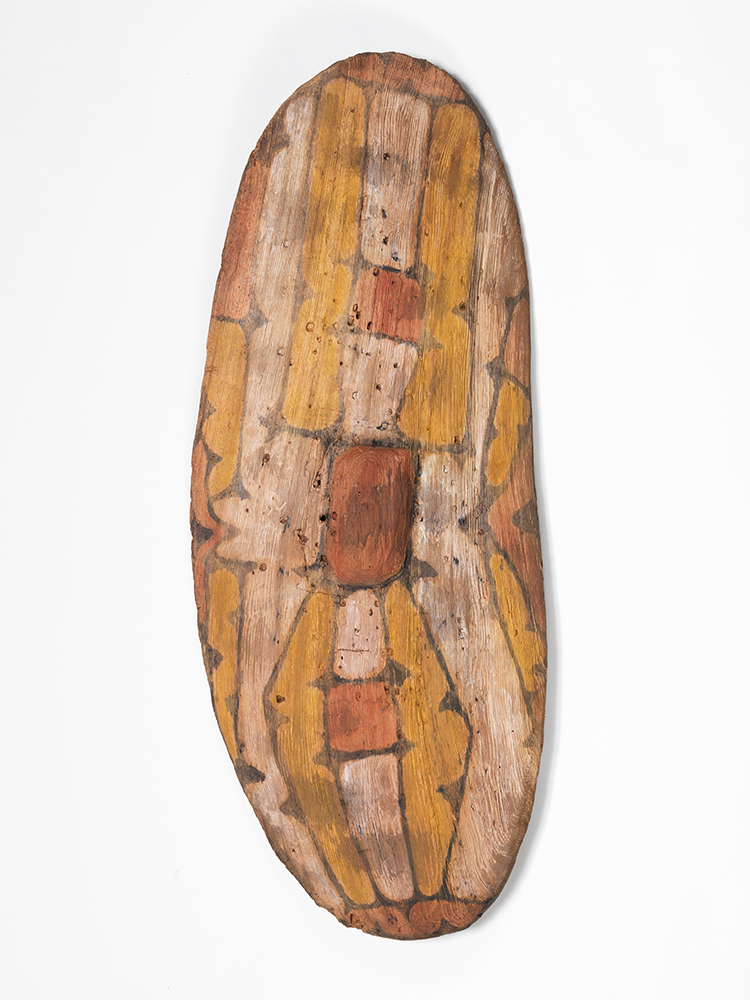We acknowledge the Traditional Owners of the land on which the Queensland Art Gallery | Gallery of Modern Art stands and recognise the creative contribution First Australians make to the art and culture of this country.

Unknown artist / Shield (North Queensland rainforest area) c.1900 / Carved softwood (Ficus sp.) with natural pigments / 85.5 x 36 x 8.5cm / Purchased 2012. Queensland Art Gallery Foundation / Collection: Queensland Art Gallery | Gallery of Modern Art
UnknownShield (North Queensland rainforest area) c.1900
Not Currently on Display
Shields like this one were traditionally made only by the rainforest peoples of north Queensland, whose lands stretch from Cardwell in the south to near Cape Tribulation in the north. They were made and used by men for fighting in battles, as well as for ceremonial purposes.
Markings such as cuts and indentations, including holes from spears and bullets, can be seen in many shields held in museum collections. The swords used with these shields were large weapons that required strength and considerable skill to wield. The shields were cut from the soft wood of the buttress roots of native figtrees and the surface prepared for embellishment.
Two initiated men would then decorate the shield, painting from opposite ends. Designs could belong to an individual or be determined by the owner’s kinship group. By sometimes incorporating blood into black pigment, the shield’s maker imparted his personal spirit into the object, giving the shield more power to protect the creator during battle. The finished shield would be presented to a young man following his initiation ceremony.
Discussion Questions
Shields are not traditionally seen displayed alongside oil paintings in art galleries. How does this display change your understanding of Australian art and history?
Classroom Activities
Australian artists such as Margaret Preston (1875–1963) looked to Indigenous art for inspiration. Preston often incorporated various Aboriginal design elements into still-life compositions as a way to identify her work as Australian; she also wanted to develop what she called a ‘national art’. Research a still-life painting or print by Preston that incorporates Aboriginal design elements.